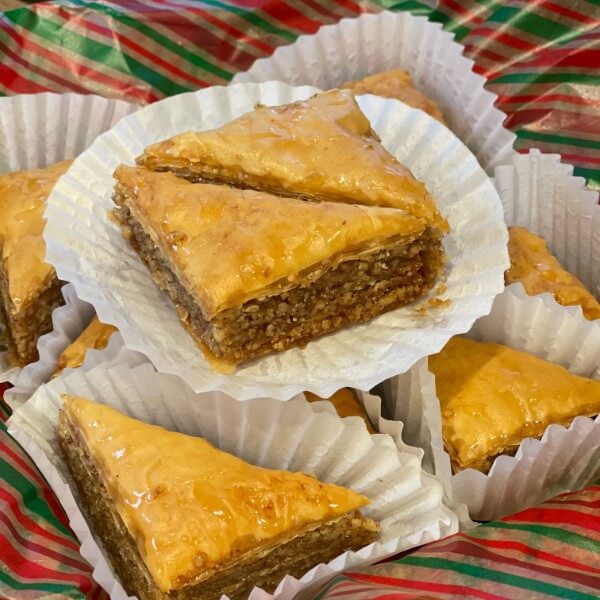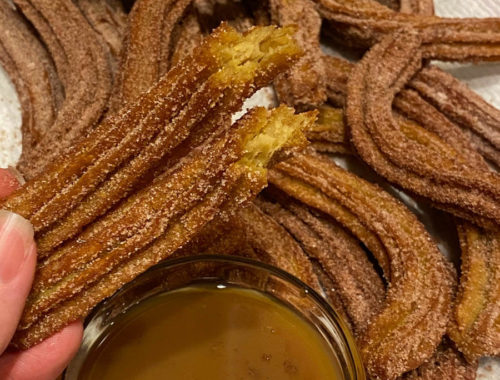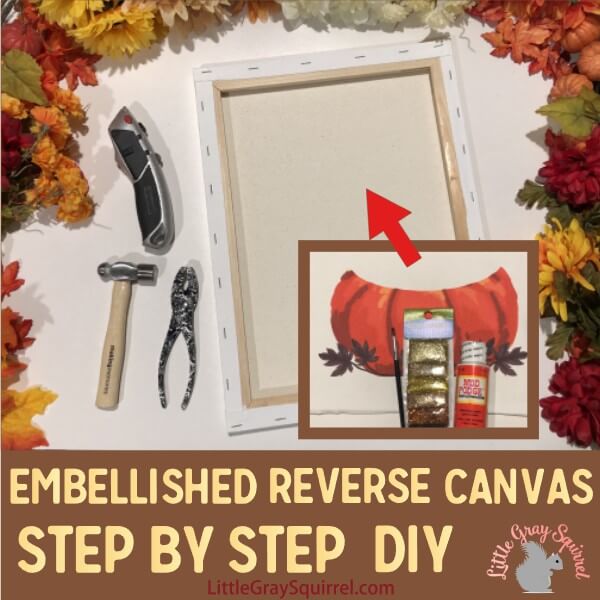
How to make baklava
How to make Baklava with honey walnut filling and a touch of cinnamon. This simple recipe has only six ingredients. Try this recipe any time of year for a flaky, buttery, rich and chewy treat.
This Baklava is my most highly requested treat at the holidays. It makes a lovely addition to cookie platters to give to friends and family.
**This post contains affiliate links. When you click these links I may make a commission on purchases made through those links. As an Amazon Associate I earn from qualifying purchases.** Please read our disclosure policy for more information.
What is phyllo dough?
Phyllo dough is also spelled Filo or Fillo. It is pronounced FEE-low.
It is paper thin (or thinner) sheets of dough that are typically made out of flour, water, vinegar, salt, and oil. It also typically has cornstarch on it to prevent the layers from sticking together.
Phyllo is a somewhat flexible dough that you can roll or fold if you coat it with butter or oil, but if it dries out, it becomes flaky and breaks.
Phyllo is not the same as puff pastry dough. Puff pastry is a laminated dough, a yeast dough that is made into layers by folding and rolling butter into the dough to create hundreds or thousands of layers that puff up when you bake it.
Phyllo is a non leavened dough that becomes flaky and puffs up from the buttered or oiled layers and moisture from the dough.
The trick to working with phyllo dough sheets is to make sure it is completely thawed out and to not let it dry out while you work with it.
Where can you get phyllo dough?
Phyllo dough is usually found in the freezer section of the grocery store. Near the frozen desserts and puff pastry. Athens and The Fillo Factory are common brands of phyllo but there are several brands. Some stores like Safeway even have a house brand.
You can also make phyllo dough from scratch but it would take a lot of practice and patience to create the delicate layers and would probably never be as thin as commercially produced phyllo dough.
Tips for working with phyllo dough
- Let the phyllo dough thaw slowly. For best results thaw over night in the refrigerator.
- Prepare all of your other ingredients and supplies you need for the recipe before unwrapping the phyllo.
- When it is completely thawed and you are ready to use it, unwrap and unroll the dough and leave it on the plastic sheet it is wrapped in. Place it on a cookie sheet that is larger than the sheets so it can lay completely flat.
- If you work quick enough (if you can finish using the dough in about 30 minutes) you can work right through the stack of dough without covering it.
- If you need to leave the dough out for a bit, place a piece of plastic wrap or parchment paper on top of the unrolled dough, wet and ring out a kitchen towel, and place it on top of the covering. The weight of the damp towel will help keep air from getting to the phyllo sheets. You do not want to get the dough wet. That will cause the layers to stick together.
- If your dough sticks together in some places, work from the outside edge of the layer where it isn’t sticking together and gently separate and pull the layers apart. Keep a hand under the layer supporting it so it doesn’t tear more than it has to. It is ok if the sheet tears, you can just piece it together like a puzzle in your pan. As you layer any torn pieces, just rotate the next sheet 180 degrees so the left side is now on the right and unless your tear is exactly in the middle, the layers will still bake up just fine.
- Butter the pan you are using so the phyllo doesn’t stick and releases nicely after baking.
- Work directly in the pan you will be using if you are making a recipe like this Baklava.
- Once the first layer of phyllo is in your pan and buttered, you can use a little less butter on each layer. The butter gives it flakiness and prevents it from drying out but with all the layers it is ok to go a little on the light side and just use enough to give it a light coating.
- If you are making something like Spanikopita and layering the phyllo before cutting, filling, and folding, you will want to make sure the edges of the phyllo sheets are brushed with butter so they stay workable when you are folding the pastry.
- Brush the top layer completely with butter so it doesn’t dry out and begin to flake off.
- Controversial tip: To speed up the process of layering the phyllo you “can” use pan spray instead of butter. This is entirely up to you and I can understand how it isn’t right for everyone.
If it sounds like something you would want to try, substitute the pan spray for the butter. Spray your pan, place the phyllo, spray a light coat on the phyllo, add another layer of phyllo, lightly spray that layer, and repeat for the rest of your recipe. - The more layers you have on top of your filling, the taller the top layer will be. I like to evenly space out the layers of phyllo through the middle and use six on the bottom and six on the top buy you can change it however you like or just add more layers to the top from a second roll of phyllo.
- After assembling the Baklava, use a thin, sharp knife to cut the phyllo into rectangles before baking. This gives you nice clean cuts without shattering the delicate baked phyllo.
- If you have any phyllo left over after a recipe, roll it back up with the plastic sheet it came with and carefully wrap it tightly with plastic wrap and seal in a zipper bag squeezing out excess air. (Unless you have a plan to use it soon, you might be better off making a quick treat with it by brushing it with butter and sprinkling it with cinnamon sugar or garlic, herbs, and cheese and rolling or folding it and baking until golden)
- Have patience and don’t give up.
I will share a video here and on Youtube soon showing step by step how I make this baklava recipe.
Join my email newsletter to be notified when the video is available.
Do you have any tips for working with phyllo? Leave a comment below and let me know!
My favorite tools and supplies to use when making Baklava
Wide pastry brush (this one is huge and makes for quicker assembly)
9″x13″x2″ Straight sided baking pan -This is the one I have. It has nice straight sides and square corners.
Sharp knife – This is the 8″ carving knife I use to get nice clean cuts in the phyllo.
Half Sheet Baking Pan – Working in kitchens for so many years, stainless true size half sheet pans are all I use.
Food Processor – Sure you can chop nuts without one but it makes the job quick
Baking Cups for serving – Paper, Foil, or Holiday
Holiday Waxed Paper for lining your treat boxes
Treat boxes in assorted sized (with a window)
Easy Baklava Recipe
Easy Honey Walnut Baklava

This is a Baklava recipe I have created and perfected over the years. I wanted it to be simple to make, have buttery, flaky top and bottom layers that aren't too thick, and a sweet, chewy middle.
It is one of my favorite and most requested treats for the holidays.
Using honey instead of a homemade syrup saves a step and tastes amazing.
A little lower oven temperature than usual lets the phyllo get nice and golden and the butter get a nice nutty flavor without burning.
It takes about 30-45 minutes to assemble but it is only six ingredients and has repeating layers which is pretty simple and it makes 48 pieces so it has a high yield for your efforts. Then it is just baking and cooling time.
Working with phyllo can take a little practice but it is ok to piece parts together if they tear, just try to have any tears on different parts so the layers stay together.
Ingredients
- 8 ounces Phyllo Sheets (1- 9"X13" roll of 24 sheets)
- 8 ounces Butter, melted
- 1 pound Walnuts
- 1/2 cup Granulated sugar
- 1 teaspoon Ground Cinnamon
- 12 ounces Honey
Instructions
- Combine walnuts, sugar, and cinnamon in a food processor and pulse until finely chopped. (See notes)
- Melt butter in a small dish.
- Brush the bottom of a 9”x13”x2” pan with butter using a pastry brush.
- Unwrap and unroll the phyllo dough. Place the stack of phyllo sheets on a cookie sheet, cover with parchment paper and place a damp towel on top of the parchment paper to prevent air from drying out the phyllo while you are getting ready to use it.
- Gently pick up one sheet of phyllo and place it in the buttered pan.
- Brush the sheet of phyllo with a light coating of butter.
- Place a second sheet of phyllo on the first buttered layer and brush it lightly with butter.
- Repeat until you have 5 sheets of buttered phyllo.
- Sprinkle ¼ of the chopped walnut mixture evenly on the buttered phyllo layers and spread it out so it is in a nice even layer.
- Place a layer of phyllo on top of the walnut mixture and carefully brush it with butter.
- Repeat with layers of phyllo and butter until you have 3 layers of phyllo.
- Sprinkle ¼ of the chopped walnut mixture and spread it out in an even layer.
- Repeat with the 3 layers of phyllo and butter and the layer of walnut mixture until the walnut mixture is gone.
- Finish the last of the phyllo by layering it with the butter. There should be about 5 layers of phyllo remaining but more or less is ok.
- Cut the assembled baklava before you bake it.
- Cut the baklava into squares but cutting it into 4 strips widthwise by 6 strips lengthwise and then into triangles by cutting each square in half diagonally.
- Bake in an oven preheated to 325 degrees for about 45-55 minutes until it is nice and golden, turning the pan throughout baking if necessary so it browns evenly.
- Remove from the oven and drizzle the honey over the entire surface of the baklava especially over the cut lines so it can soak into all the layers and the walnut mixture.
- Let cool.
- Remove from pan and place on a platter or in muffin cups. Store in an air tight container.
Notes
You can use a knife to finely chop the walnuts and stir in the cinnamon and sugar.
You can also put the walnuts in a plastic bag and roll over the bag with a rolling pin to crush the walnuts into tiny pieces, then add cinnamon and sugar.
I used the 16 ounce box of Athens brand Phyllo which is two individually wrapped rolls of 9"x14" Sheets. There are about 18-19 sheets per roll which is exactly what this recipe was written for.
When assembling the Baklava using sheets of phyllo that are a little too short for your pan, if it is only a half an inch or so just alternate the layers so one touches the top of the pan and one touches the bottom or left and right.
If the phyllo is a little too long, you can trim the stack of phyllo to size but be careful because pushing a knife into phyllo can seal it together and make it difficult to separate.
You can also butter to the edge of the pan and fold the long end on top of itself and butter on top of it. Alternate which side of the pan has the extra part each layer so it doesn't bulk up too much on one end.
If you use a different brand like The Fillo Factory, those have 20 sheets that are 13"x18" so after you unroll it, just slice the stack of layers in half widthwise so you have two stacks of 13"x9" sheets. There will be about 40 sheets after cutting them in half. You can also cut them as you assemble them but it is best to only work with what you need and immediately wrap the remaining so it doesn't dry out.
You can increase the layers as you like if you want a flakier Baklava.
The layers for one roll of the Athens Phyllo would be:
5 layers of phyllo
Walnuts
3 layers phyllo
Walnuts
3 layers phyllo
Walnuts
3 layers phyllo
Walnuts
4-5 layers phyllo
Nutrition Information:
Yield:
48Serving Size:
1 pieceAmount Per Serving: Calories: 140Total Fat: 10gSaturated Fat: 3gTrans Fat: 0gUnsaturated Fat: 7gCholesterol: 10mgSodium: 54mgCarbohydrates: 12gFiber: 1gSugar: 8gProtein: 2g
These calories are estimate only. Please talk to a doctor about how many calories and what foods are right for you.




